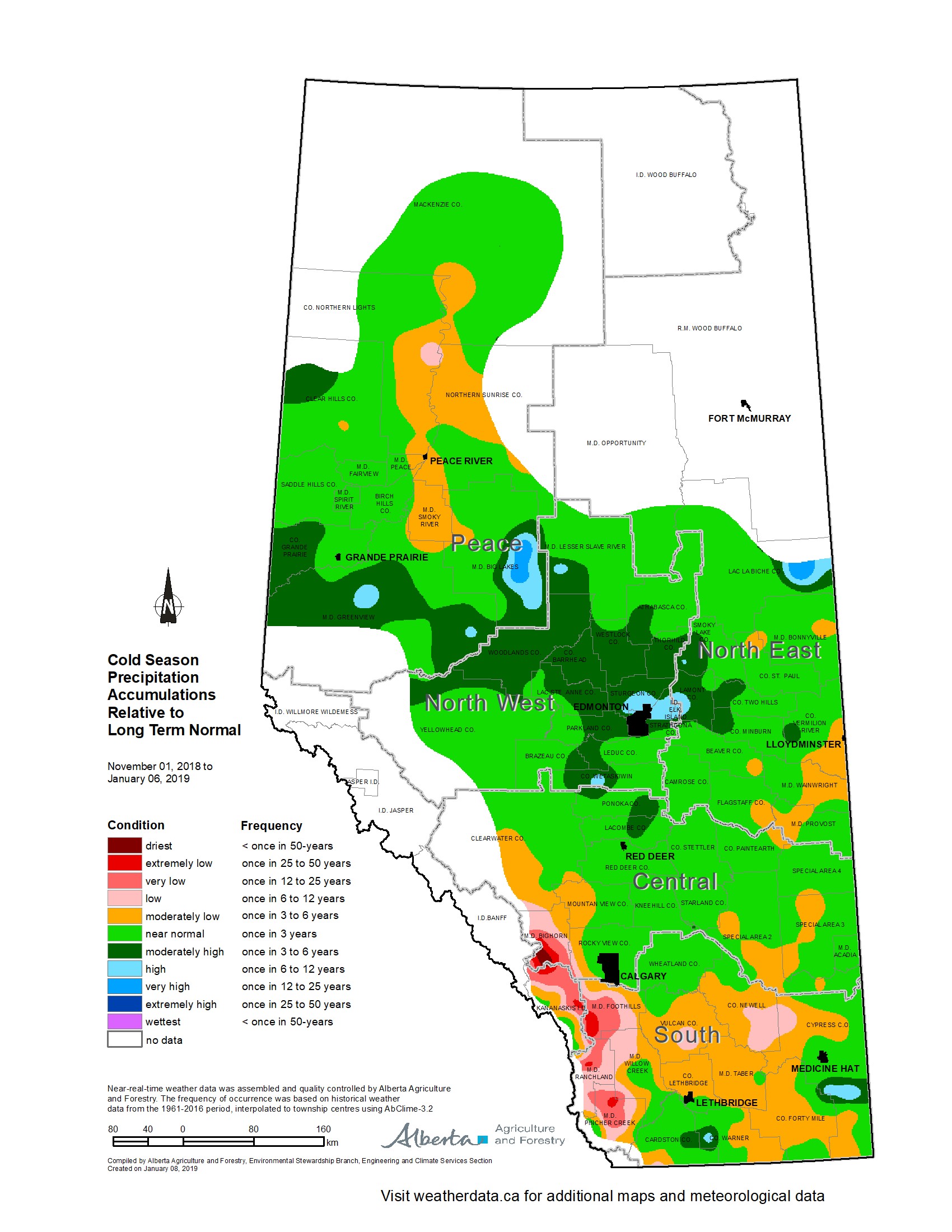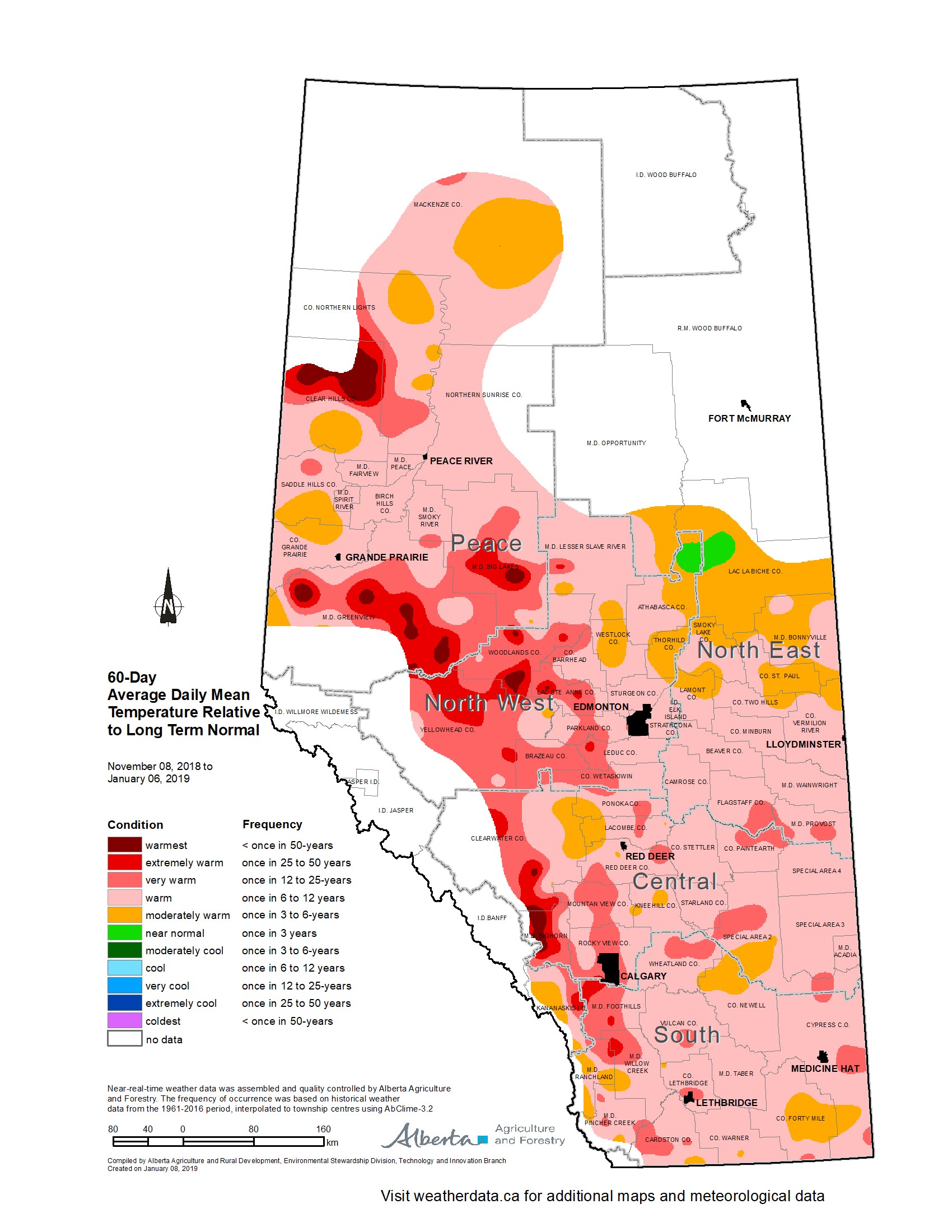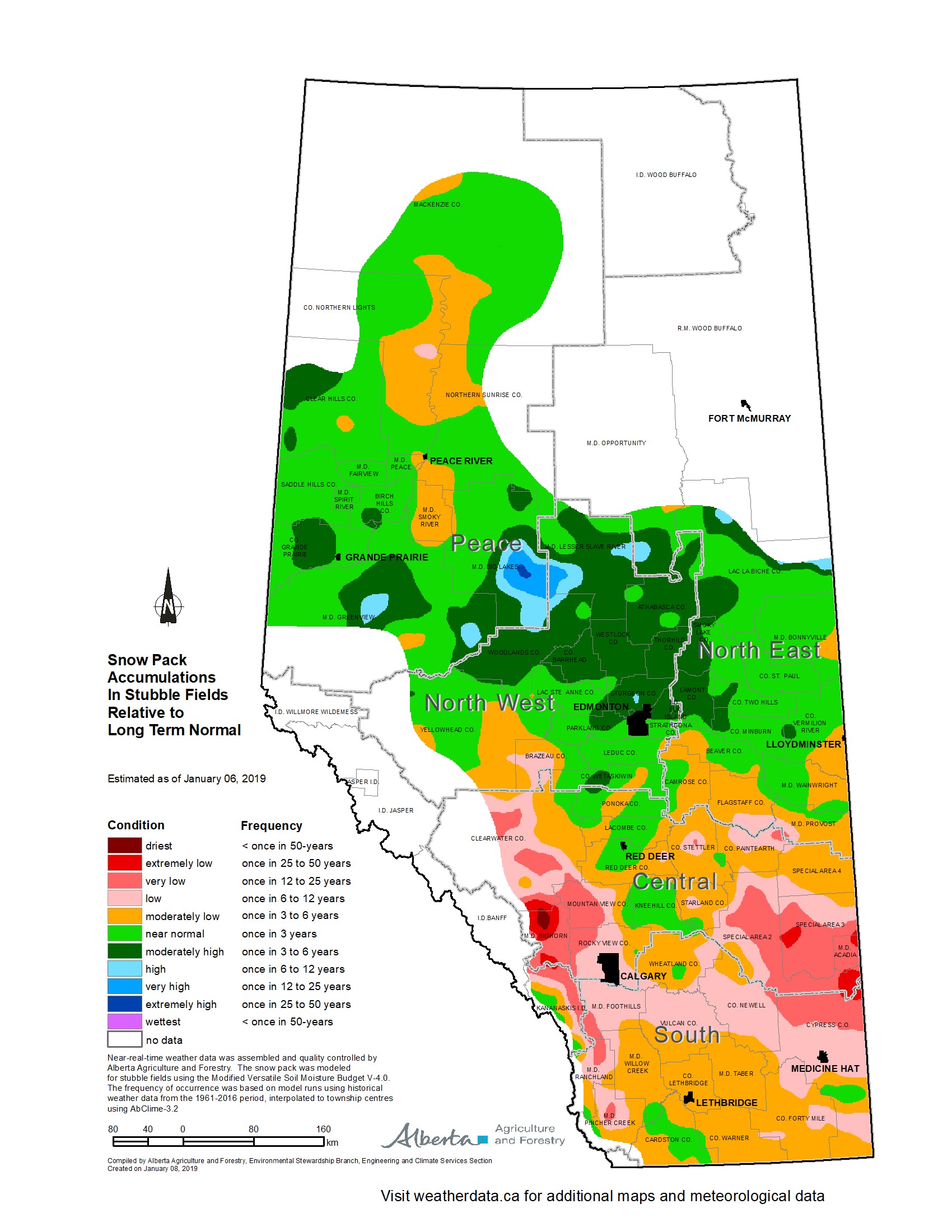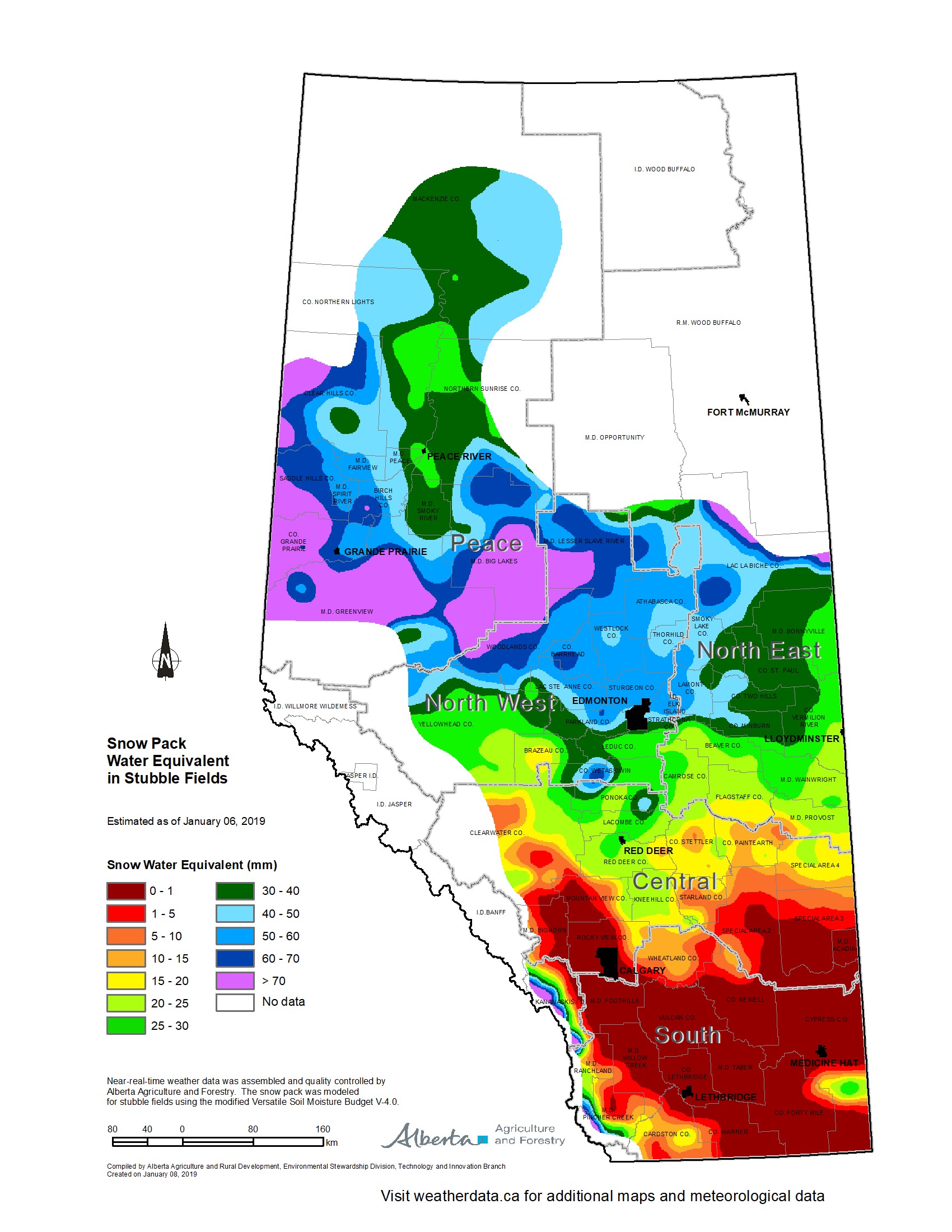| | Ralph Wright, manager of the agro-meteorological applications and modelling section with Alberta Agriculture and Forestry, analyzes the latest data.
Winter precipitation accumulations relative to normal

“Since November 1, 2018, most of the province’s agricultural areas lying north of Calgary have experienced at least near normal precipitation accumulations,” says Wright. “In contrast, throughout much of southern Alberta, accumulations have been below average, ranging from about one-in-three to six year lows for those areas east of Highway 2, and falling to at least one-in-six to 12 year lows throughout many of the foothill areas.”
Temperature trends relative to normal over the past 60 days

Wright says that so far, the winter has been milder than normal, which stands in sharp contrast to the cold and wet weather that dominated most of September and the first half of October.
“Looking back over the past 60 days, most of the plains areas stretching from High Level to the U.S. border are estimated to see temperatures this warm on average less than one-in-six years. Warmer yet is a large area that lies west of Highway 2 between High Prairie and down at least as far as Calgary that has seen temperatures this mild on average, less than one-in-12 years.”
Snow packs relative to normal

“As of January 6, 2019, snow packs for this time of year are generally near normal across most of the north half of the province. Above average snow is found across a wide area lying generally south of Slave lake, stretching south to the Yellowhead Highway and roughly between Edson and Vegreville.”
Snow water equivalent in snow packs

Wright adds that most areas north of Edmonton currently contain at least 50 mm of water in the snow packs. “The deepest snow packs are found throughout much of the extreme southern portions and western portions of the Peace Region with many areas having more than 70 mm of water contained within them. For perspective, on average May precipitation accumulations generally range from 50 to 70 mm throughout these areas. South of the Yellowhead Highway, snow packs gradually thin out with most of southern Alberta now being largely snow free.”
Find more information at weatherdata.ca, Agricultural Moisture Situation Updates, or contact Ralph Wright, manager of the agro-meteorological applications and modelling section at 780-446-6831.
Contact:
Ralph Wright
780-446-6831 |
|